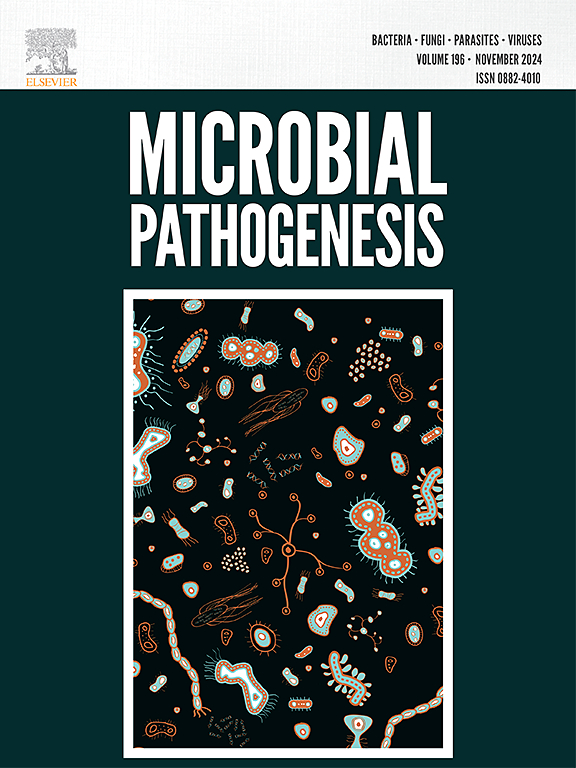Are Candida albicans isolates from people living with HIV more resistant to antifungals? A systematic review and meta-analysis
IF 3.5
3区 医学
Q3 IMMUNOLOGY
引用次数: 0
Abstract
People living with HIV (PLHIV) often require antifungal medications for the treatment or prevention of infections, which may contribute to the emergence of resistant Candida albicans strains. This systematic review aimed to investigate whether the prevalence of antifungal resistance in C. albicans isolates from the oral and oropharyngeal cavities is higher in PLHIV compared to HIV-uninfected individuals. The research question was structured using the Population (P), Exposure (E), Comparator (C), and Outcome (O) strategy: (P) PLHIV and HIV-uninfected individuals; (E) HIV infection; (C) HIV-uninfected individuals; (O) Prevalence of antifungal-resistant C. albicans. The protocol was registered in PROSPERO (CRD42022350141).
A search was conducted across five databases (PubMed, EMBASE, Scopus, LiVivo, Lilacs, Web of Science) and Google Scholar, including studies published up to May 2024. Two independent reviewers performed screening, data extraction, and quality assessment using the Joanna Briggs Institute tool. Meta-analyses for each antifungal were conducted using fixed-effect models and the Peto's method.
Out of 5425 records, 13 studies from nine countries were included in the meta-analysis. The analysis revealed higher fluconazole resistance in PLHIV. For a minimum inhibitory concentration (MIC) > 8 μg/mL, the odds ratio (OR) was 3.53 (CI: 1.29–2.40; p: 0.029). For MIC >64 μg/mL, the OR was 2.33. Resistance to other antifungals (itraconazole, voriconazole, ketoconazole, nystatin, amphotericin B, and flucytosine) was similar between groups. Low heterogeneity indicated consistent results across studies.
In conclusion, fluconazole resistance is significantly higher in PLHIV, likely due to prolonged use, while other antifungals remain effective treatment options for both populations studied.
从HIV感染者身上分离的白色念珠菌对抗真菌药的耐药性更强吗?系统回顾和荟萃分析。
艾滋病毒感染者通常需要抗真菌药物来治疗或预防感染,这可能导致耐药白色念珠菌菌株的出现。本系统综述旨在调查PLHIV患者口腔和口咽腔白色念珠菌分离株的抗真菌耐药性是否高于未感染hiv的患者。研究问题采用人口(P)、暴露(E)、比较者(C)和结果(O)策略进行结构设计:(P) hiv感染者和未感染hiv的个体;(E)艾滋病毒感染;(C)未感染艾滋病毒的个人;(O)抗真菌白色念珠菌的患病率。该协议已在PROSPERO (CRD42022350141)中注册。检索了五个数据库(PubMed, EMBASE, Scopus, LiVivo, Lilacs, Web of Science)和谷歌Scholar,包括截至2024年5月发表的研究。两位独立的审稿人使用Joanna Briggs研究所的工具进行筛选、数据提取和质量评估。采用固定效应模型和Peto方法对每种抗真菌药物进行meta分析。在5425项记录中,来自9个国家的13项研究被纳入了荟萃分析。分析显示PLHIV对氟康唑有较高的耐药性。最小抑制浓度(MIC)为8 μg/mL时,比值比(OR)为3.53 (CI: 1.29-2.40;p: 0.029)。MIC为64 μg/mL时,OR为2.33;对其他抗真菌药物(伊曲康唑、伏立康唑、酮康唑、制霉菌素、两性霉素B和氟胞嘧啶)的耐药性组间相似。低异质性表明研究结果一致。总之,PLHIV患者对氟康唑的耐药性明显较高,这可能是由于长期使用氟康唑所致,而其他抗真菌药物仍然是两种研究人群的有效治疗选择。
本文章由计算机程序翻译,如有差异,请以英文原文为准。
求助全文
约1分钟内获得全文
求助全文
来源期刊

Microbial pathogenesis
医学-免疫学
CiteScore
7.40
自引率
2.60%
发文量
472
审稿时长
56 days
期刊介绍:
Microbial Pathogenesis publishes original contributions and reviews about the molecular and cellular mechanisms of infectious diseases. It covers microbiology, host-pathogen interaction and immunology related to infectious agents, including bacteria, fungi, viruses and protozoa. It also accepts papers in the field of clinical microbiology, with the exception of case reports.
Research Areas Include:
-Pathogenesis
-Virulence factors
-Host susceptibility or resistance
-Immune mechanisms
-Identification, cloning and sequencing of relevant genes
-Genetic studies
-Viruses, prokaryotic organisms and protozoa
-Microbiota
-Systems biology related to infectious diseases
-Targets for vaccine design (pre-clinical studies)
 求助内容:
求助内容: 应助结果提醒方式:
应助结果提醒方式:


